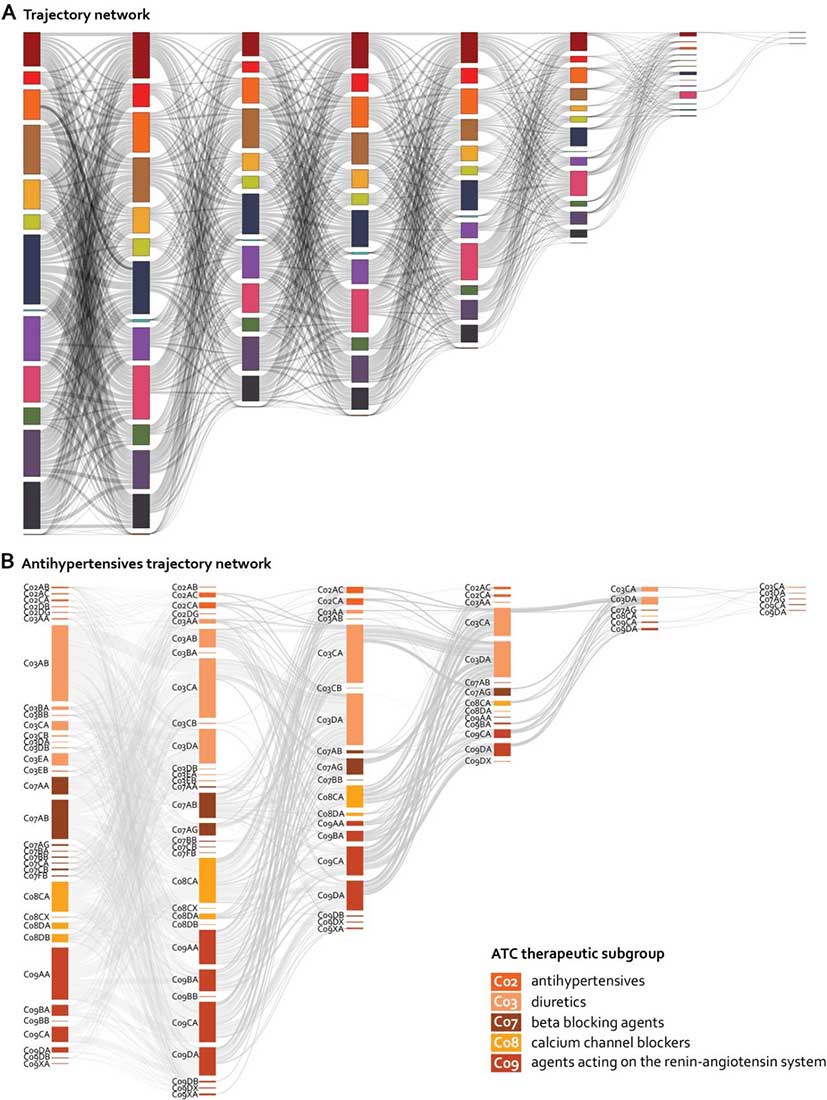Huge study unveils the consumption of drugs by Danes
Researchers at the University of Copenhagen and Statistics Denmark have analysed more than one billion prescriptions issued by general practitioners. In the long term, the analysis may help to optimise prescription trajectories, but there are still many things we do not know about the associations between diseases and treatment patterns, explains Professor Søren Brunak who has been in charge of the study.

Many Danes have been prescribed more than one drug for the same disease. If the medicine is no longer effective, your GP may decide that you should try another drug to achieve the desired effect.
Drug use including these shifts between drugs create a so-called a prescription trajectory.
To find the most important trajectories in the drug consumption of Danes, a research team at the University of Copenhagen and Statistics Denmark has analysed 24 years of prescriptions. In total, more than one billion prescriptions were included in the analysis.
This study is first and foremost a map of how we are prescribed our drugs.
"In this specific study, we have – among other things – examined medicine for patients with high blood pressure which is a common disease. This means that, here, we have many patients who have received blood pressure-lowering drugs, and we have good statistics on their prescription trajectories," says leading author and Professor Søren Brunak from the Novo Nordisk Foundation Center for Protein Research.
“We can see that if patients start with a type of medicine called ACE inhibitors and does not shift drugs along the way, then – on average – these patients tend to live somewhat shorter than patients who shift to another type of blood pressure-lowering medicine. However, there is not necessarily any proof of causality between drug shifting and shortened lifespan. But we can see this trend, and we have started to perform more analyses to clarify the picture so that, in the long term, we can find causal explanations,” he says.

Trajectories for Danish patients using drugs to lower the blood pressure: Illustration: Brunak et.al. 2021.
Nine million trajectories
The study was conducted based on data from the Danish National Prescription Registry processed in a supercomputer. The result has been an explosion of trajectories.
The researchers therefore set a limit for when the trajectories should be included in the final study.
“We decided that there must be at least 1000 patients with the same prescription trajectory before we characterise it as a trajectory. This has given us nine million trajectories,” explains Assistant Professor Alejandro Aguayo Orozco, the study's first author.
“The number does not mean much in itself because if we had said 5,000 patients with the same trajectory, the number would be different. But the most important thing is that we do find them so that we can make a kind of map that describes how the Danes are prescribed their drugs by their general practitioner.”
Plan to include genetics and patient records
Søren Brunak explains that the shifts between drugs may have many different causes. Among other things, they may be due to genetic differences, which is not part of this study, although the team behind is working to include precisely this type of data as well.
“In our next study, we link genetics to our dataset, and then we might be able to better find direct causal relationships. But this study is first and foremost a map of how we are prescribed our drugs in order that we can calculate survival statistics for different groups, correct for age and so on. And it could very well be that some people simply visit the doctor more than others and in that way are kept under closer observation. We do not know that,” says Søren Brunak.
The goal is to be able to predict which drug will likely be best to start with for a given patient. In addition to linking genetics to the Danes’ drug use, the research group is also in the process of examining patient records in the hope of reducing side effects caused by drug combinations.
“For the patient records, we use something called text mining. This means that we use a supercomputer to review the sentences in the medical records, keeping an eye on specific words and contexts relating to side-effects. In this way, we can get a more complete understanding of the major arteries in the medication consumption among Danes. In the end, all this knowledge may lead to better patient outcomes and more healthy Danes,” says Professor Laust Hvas Mortensen from the Department of Public Health who has also contributed to the study.
Read the entire study ‘Optimizing drug selection from a prescription trajectory of one patient’ here.
Contact
Professor Søren Brunak
soren.brunak@cpr.ku.dk
+45 35 32 50 26
Press Officer Søren Thiesen
s.thiesen@sund.ku.dk
+45 28 75 29 34
